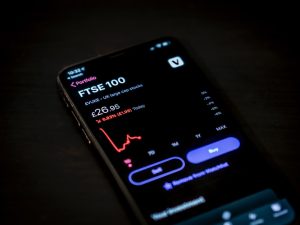Understanding Forex Margin Requirements: A Beginner’s Guide
Forex trading is an exciting and potentially lucrative market that allows individuals to trade currencies from around the world. However, before diving into the world of forex trading, it is crucial to understand the concept of margin requirements. Margin requirements play a significant role in forex trading as they determine the amount of capital that traders need to have in their account to open and maintain positions.
What is Margin?
In forex trading, margin refers to the amount of money required to open a position. It is a form of collateral that traders must deposit with their broker to cover any potential losses. Margin is typically expressed as a percentage of the total position size.
Margin requirements are set by brokers and vary depending on various factors such as the currency pair being traded, the leverage offered by the broker, and the trader’s account size. The margin requirement is the minimum amount of margin needed to open a position.
Understanding Leverage
Leverage is another important concept in forex trading that is closely related to margin requirements. Leverage allows traders to control a larger position with a smaller amount of capital. It is expressed as a ratio, such as 1:100 or 1:500, indicating how much the trader can control compared to their initial investment.
For example, with a leverage ratio of 1:100, a trader can control a position worth $100,000 with only $1,000 of their own capital. While leverage can amplify potential profits, it also increases the risk of losses. Therefore, it is crucial to have a clear understanding of both leverage and margin requirements before engaging in forex trading.
Variation in Margin Requirements
Margin requirements can vary significantly between different brokers and currency pairs. Major currency pairs like EUR/USD or GBP/USD usually have lower margin requirements compared to exotic currency pairs. Exotic currency pairs involve currencies from emerging or less frequently traded countries and tend to have higher volatility, making them riskier to trade.
Brokers may also have different margin requirements based on the size of the trader’s account. Higher account sizes generally allow for lower margin requirements, as brokers consider these traders to have more experience and financial stability.
Calculating Margin Requirements
To calculate the margin requirement for a particular trade, traders need to consider the position size, leverage, and currency pair being traded. The formula to calculate the margin requirement is:
Margin Requirement = (Position Size / Leverage) x Exchange Rate
For example, if a trader wants to open a position of 1 lot (100,000 units) on the EUR/USD currency pair with a leverage of 1:100 and the current exchange rate is 1.20, the margin requirement would be:
Margin Requirement = (100,000 / 100) x 1.20 = $1,200
This means that the trader would need to have at least $1,200 in their account to open and maintain this position.
Managing Margin Requirements
Managing margin requirements is essential to avoid margin calls and potential losses. A margin call occurs when the account equity falls below the required margin. When this happens, brokers may issue a margin call and require the trader to deposit additional funds to meet the margin requirement. If the trader fails to do so, the broker may close the trader’s positions to limit further losses.
To avoid margin calls, traders should monitor their account balance regularly and ensure they have sufficient funds to cover their positions. It is recommended to use stop-loss orders to limit potential losses and implement risk management strategies to protect the trading capital.
Conclusion
Understanding forex margin requirements is crucial for beginner traders. It determines the amount of capital required to open and maintain positions in the forex market. By grasping the concept of margin, leverage, and calculating margin requirements, traders can effectively manage their risk and avoid margin calls. It is important to choose a reputable broker that offers transparent margin requirements and provides educational resources to help traders navigate the forex market safely and profitably.





